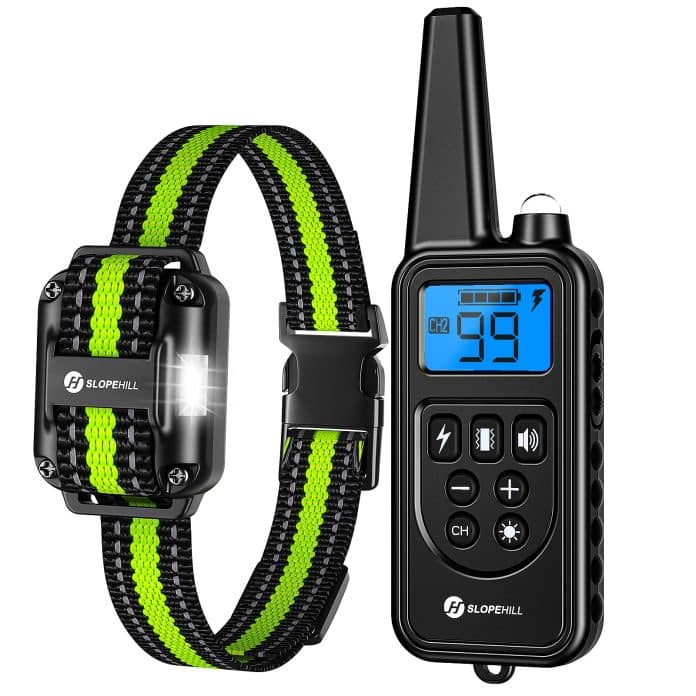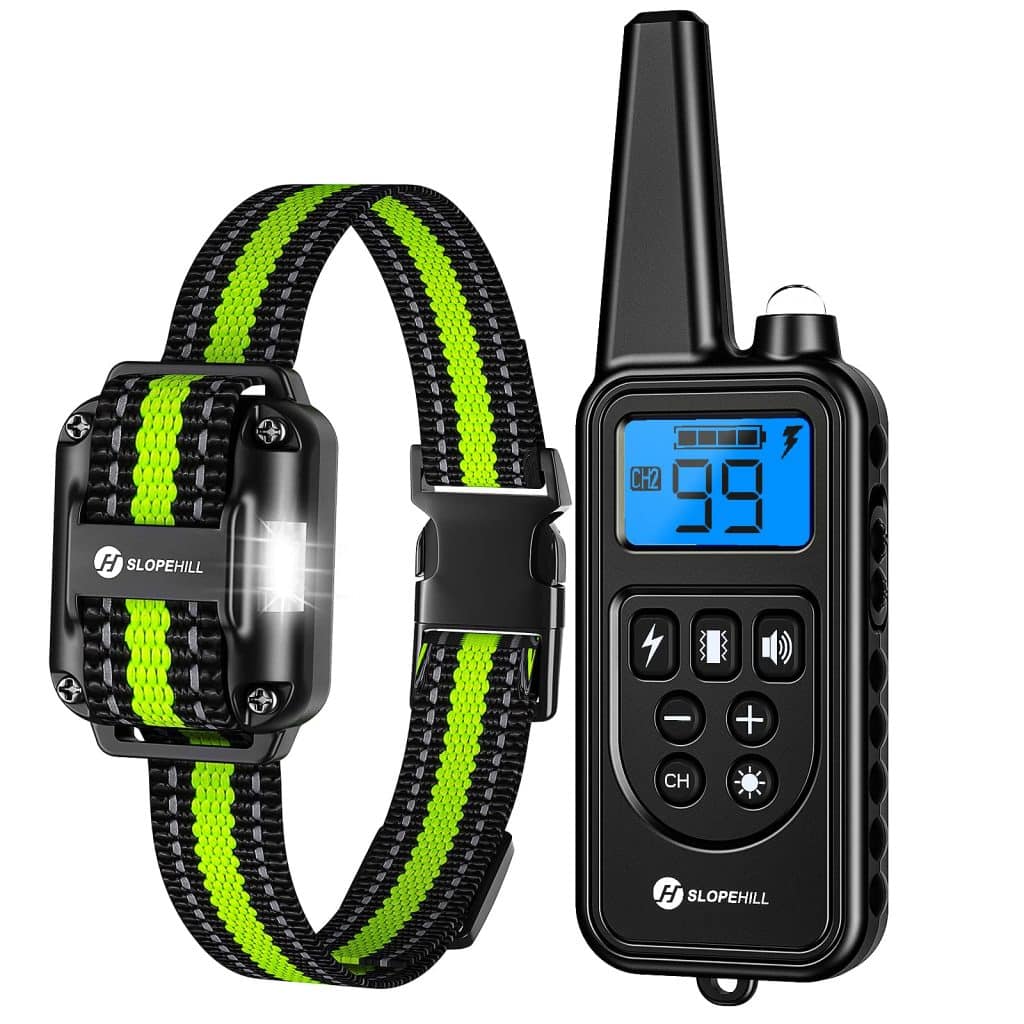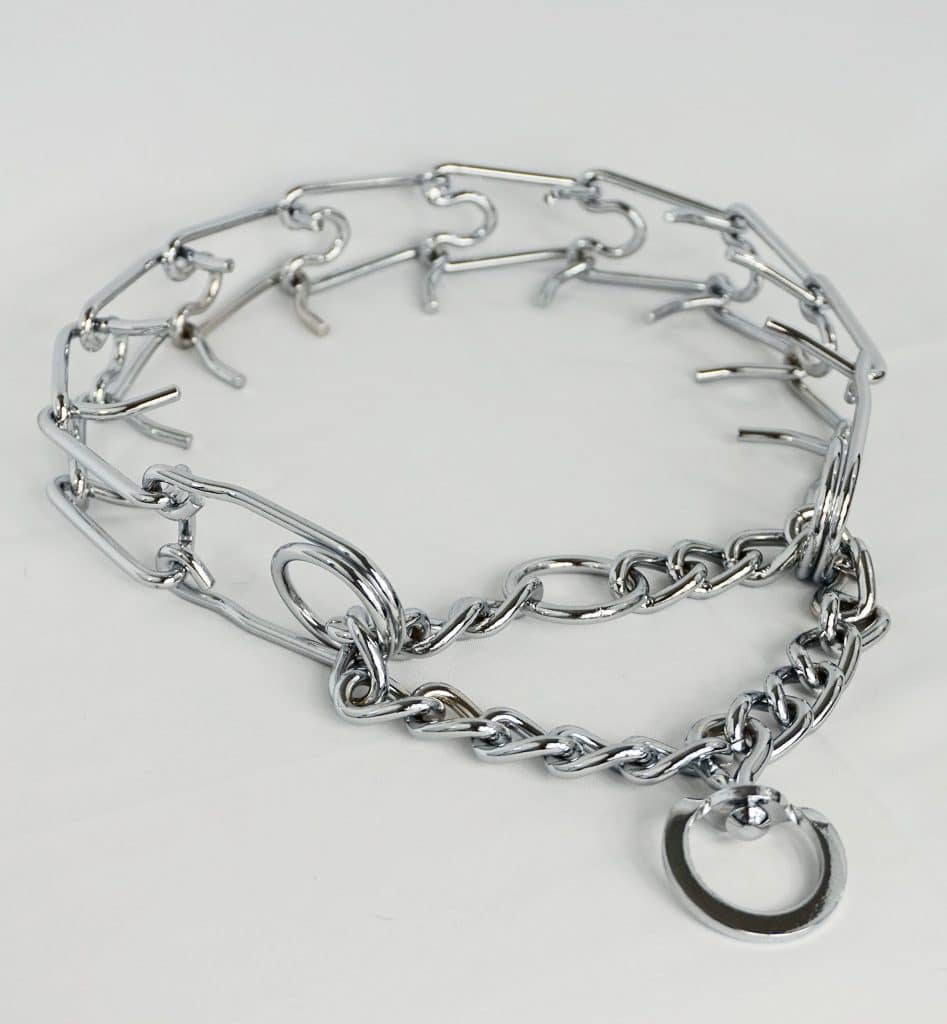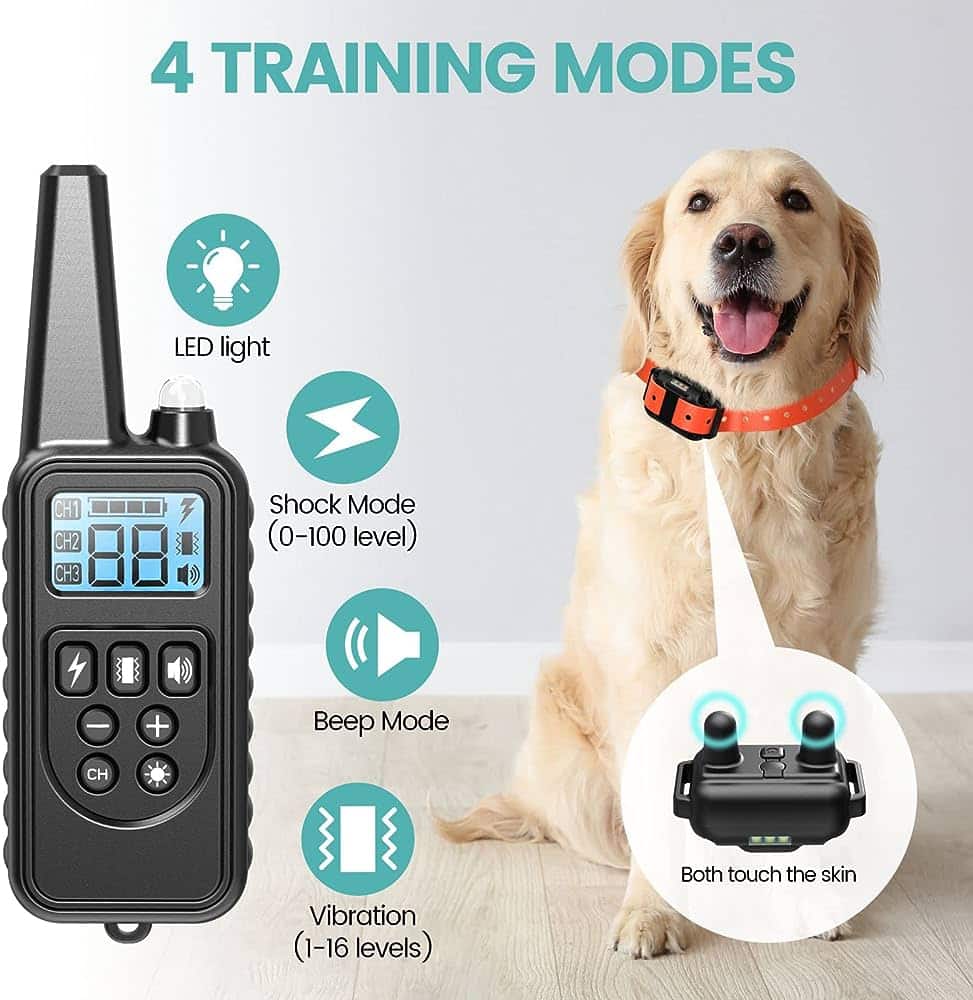If you’re a dog owner looking for practical training methods, you may have come across the idea of using a dog training collar.
But is it a good idea? This article will explore the pros and cons of using a dog training collar, helping you make an informed decision for the well-being and behavior of your furry friend.
While some argue that these collars can be a valuable tool in shaping desired behavior, others believe they may cause harm or unnecessary discomfort to dogs.
So, before deciding, it’s essential to delve into the various perspectives and evidence surrounding the topic.
Types of Dog Training Collars
Choke Collars
Choke collars, or slip collars, are made of metal or nylon and work by tightening around the dog’s neck when pressure is applied. These collars are designed to mimic the natural biting sensation that dogs use to establish dominance in the pack. However, they can be controversial and potentially harmful if not used correctly. Using choke collars with caution and under the guidance of a professional trainer is essential.
Prong Collars
Prong collars, also called pinch collars, are made of metal and have prongs that face inward. When pressure is applied, the prongs cause discomfort or a pinch on the dog’s neck. The purpose of a prong collar is to create a negative association with pulling or lunging, encouraging the dog to stop these behaviors. Like choke collars, prong collars should only be used with proper guidance and training.
Shock Collars
Shock collars, electronic collars, or e-collars deliver a mild electrical shock to the dog’s neck when triggered by a remote or automatic device. The intensity of the shock can be adjusted based on the dog’s response. These collars are often used for training, such as teaching obedience commands or addressing behavior issues. However, they can be seen as controversial due to the potential for misuse and the discomfort they may cause the dog.
Benefits of Dog Training Collars
Effective Training Tool
When used correctly and under the guidance of a professional trainer, dog training collars can be an effective tool for teaching obedience commands and modifying undesirable behaviors. The aversive stimuli provided by the collars can help to create clear boundaries and communicate expectations to the dog.
Quick Results
One of the advantages of using dog training collars is that they can often yield quicker results than other training methods. The aversive stimuli associated with the collars can help the dog understand unwanted behaviors, leading to more immediate behavioral changes.
Control and Safety
During training sessions or outdoor activities, dog training collars can provide additional control and safety. They can help prevent a dog from running into dangerous situations, chasing wildlife, or engaging in aggressive behavior towards other animals or humans.
Controversies Surrounding Dog Training Collars
Potential for Misuse
One of the main controversies surrounding dog training collars is the potential for misuse. Improper use of these training tools can lead to physical and psychological harm to the dog. It is crucial to thoroughly understand the collar’s proper usage and utilize it under the guidance of a professional trainer.
Physical and Psychological Harm
There are concerns that dog training collars, particularly choke and shock collars, can cause physical and psychological harm to the dogs. Unreasonable force, prolonged or inappropriate use, or high levels of shock can cause stress, fear, and even injury to the dog. It is essential to prioritize the well-being and comfort of the dog when using these collars.
Effectiveness in Long-Term Training
Another controversy surrounding dog training collars is their effectiveness in long-term training. Some argue that relying solely on aversive methods may mask underlying issues and not address the root cause of certain behaviors. Combining training collars with positive reinforcement and other training methods is essential to ensure a holistic and practical approach to training.
Alternative Training Methods
Positive Reinforcement Training
Positive reinforcement training focuses on rewarding desired behaviors rather than punishing unwanted behaviors. This method uses treats, praise, and other rewards to motivate and reinforce the dog’s good behavior. Positive reinforcement training helps create a positive association with training and encourages dogs to repeat behaviors that result in rewards.
Clicker Training
Clicker training is a method that uses a small handheld device called a clicker to mark desired behaviors. The clicker’s sound is paired with a reward, usually a treat, to create a positive association. The clicker is a precise way to communicate to the dog that they have done something correctly. This method enables efficient communication and can be combined with other training techniques.
Vocal Commands
Using vocal commands is a common and effective training method. Dogs can learn to associate specific words or phrases with certain actions or behaviors. Consistency and clarity in vocal commands are crucial for successful training. Positive reinforcement and rewards can be combined with vocal commands to strengthen the desired behavior.
Choosing the Right Dog Training Collar
Consider Dog’s Temperament
Before selecting a training collar, it is essential to consider your dog’s temperament and specific needs. Confident collars may be more suitable for dogs with different temperaments or sizes. Some dogs respond better to gentler training methods, while others require more potent aversive stimuli. Consulting with a professional trainer can help determine the best collar for your dog.
Consult a Professional Trainer
Seeking guidance from a professional trainer is highly recommended when choosing a dog training collar. They can assess your dog’s behaviors, temperament, and specific training goals to recommend the most appropriate collar and training methods. A professional trainer can also provide hands-on guidance on how to use the collar correctly and effectively.
Research Different Brands and Models
A wide range of dog training collars are available in the market, each with unique features and designs. Researching different brands and models is crucial to ensure you select a safe, comfortable, and effective collar for your dog. Read customer reviews and consult with experts to make an informed decision.
Proper Usage of Dog Training Collars
Read Instruction Manuals
To ensure the proper usage of dog training collars, it is essential to read and understand the instruction manuals provided by the manufacturer. The manuals provide essential information on how to fit the collar correctly and how to operate the collar within safe and appropriate settings. Ignoring or neglecting the instructions can lead to misuse or even harm to the dog.
Gradual Introduction to Collar
When introducing a dog training collar, it is essential to do so gradually and positively. Allow the dog to familiarize itself with the collar before using any aversive stimuli. This can be done by associating the collar with positive experiences, such as giving treats or engaging in fun activities while the collar is on. Gradual introduction helps the dog build a positive association with the collar.
Consistent and Fair Training
Consistency and fairness are essential when using dog training collars. Consistent training helps the dog understand and adapt to the desired behaviors more effectively. Fair training ensures that the aversive stimuli applied by the collar are appropriate and proportional to the behavior being corrected. Avoiding excessive force or punishment and providing ample positive reinforcement for desired behaviors is essential.
Training Specific Behaviors with Dog Training Collars
Basic Obedience Commands
Dog training collars can help teach basic obedience commands such as sit, stay, and come. These collars can guide and reinforce to ensure the dog understands and follows these commands consistently. The aversive stimuli associated with the collars help establish boundaries and communicate the desired behavior more effectively.
Behavior Modification
Dog training collars can also be helpful in modifying unwanted behaviors, such as excessive barking, jumping, or pulling on the leash. The aversive stimuli can negatively associate these behaviors, encouraging the dog to stop engaging in them. However, it is essential to address the underlying cause of the behavior and combine collar training with positive reinforcement techniques for long-term behavior modification.
Addressing Aggression
In some instances, dog training collars can be used to address aggression issues. However, aggression is a severe behavior problem and should be handled with utmost care and under the guidance of a professional trainer. Collars should never be used as the sole method for addressing aggression but rather in combination with a comprehensive behavior modification program.
Common Myths about Dog Training Collars
Causes Harm to Dogs
One common myth about dog training collars is that they cause harm to dogs. While improper usage or excessive force can lead to physical or psychological harm, these collars can be a safe and effective training tool when used correctly and responsibly. It is crucial to prioritize the dog’s welfare and always use the collar under the guidance of a professional trainer.
Only for Aggressive Dogs
Another myth is that dog training collars are only suitable for aggressive dogs. These collars can be used for various training needs, from basic obedience to behavior modification. The collars’ effectiveness depends on the specific training goals and the proper usage techniques.
Replaces Training Effort
Some believe using dog training collars can replace the effort and time required for proper training. However, this is a misconception. Training collars can assist and expedite the training process, but they should always be used with proper training methods and techniques. Consistent effort, positive reinforcement, and clear communication between dog and owner remain crucial elements of successful training.
Personal Experiences of Dog Owners
Success Stories
Many dog owners have reported success using dog training collars as part of their training methods. They have seen improvements in their dog’s obedience, behavior modification, and overall control. Success stories often highlight the importance of proper usage, consistency, and combining collar training with positive reinforcement techniques.
Challenges Faced
Some dog owners have faced challenges using training collars, particularly when they have not received proper guidance or training. Understanding the limitations and potential risks associated with these collars is vital, and seeking professional assistance to overcome any challenges or difficulties is vital.
Individual Preferences
Personal preferences play a significant role in the use of dog training collars. Some dog owners may feel comfortable using these collars as part of their training methods, while others prefer alternative techniques. It is important to respect individual preferences and prioritize the well-being and comfort of the dog in any training approach.
Professional Opinions on Dog Training Collars
Veterinarians
Opinions among veterinarians regarding the use of dog training collars can vary. Some veterinarians believe these collars can be practical tools when used responsibly and under professional guidance. Others express concerns regarding potential harm or misuse and advocate for alternative training methods. Consulting with a veterinarian can provide valuable insights specific to the health and well-being of individual dogs.
Animal Behaviorists
Animal behaviorists, who specialize in understanding and modifying animal behavior, often have insights into dog training collars’ effectiveness and ethical considerations. While some behaviorists may support the responsible use of these collars, others may emphasize positive reinforcement and reward-based training techniques. Seeking guidance from an animal behaviorist can help you understand which training methods suit your dog.
Professional Trainers
Professional dog trainers are experienced in utilizing various training methods, including dog training collars. They can assess individual dogs’ specific needs and behaviors and recommend the most appropriate collar and training techniques. Professional trainers can provide hands-on guidance and support in using collars effectively and safely, ensuring the dog’s well-being and training success.
In conclusion, dog training collars can be an effective tool for training and modifying behaviors when appropriately used, under the guidance of a professional trainer, and with the dog’s well-being as a top priority.
While controversies and myths surround these collars, it is essential to consider individual dog temperament, consult with experts, and explore alternative training methods. Ultimately, the decision to use a dog training collar should be made carefully considering the dog’s needs and the most appropriate and ethical training approach.











![Petrainer Dog Training Collar [100% Waterproof] Petrainer Dog Training Collar](https://mydogtrainingcollar.com/wp-content/uploads/2019/03/Petrainer-Dog-Training-Collar-218x150.jpg)


































